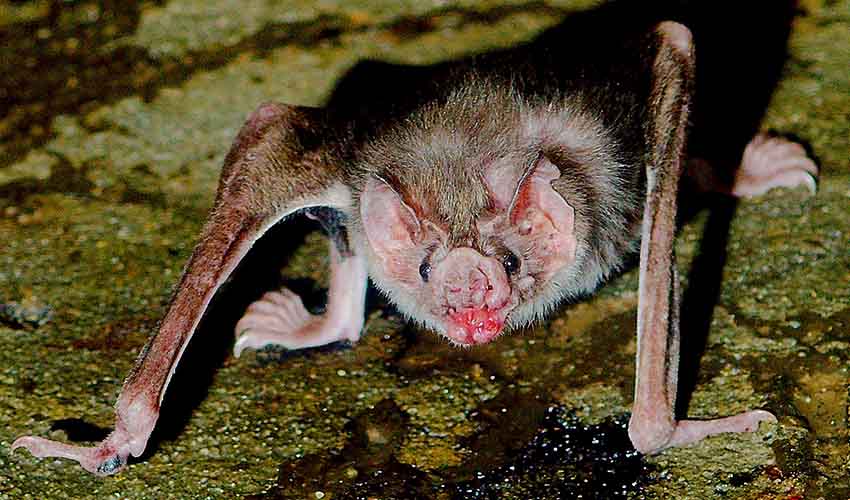Found throughout Central and South America, this small, nocturnal mammal is the only bat species that feeds primarily on the blood of mammals, especially livestock like cows, pigs, and horses. But don’t let the name or the folklore fool you — the common vampire bat is far more fascinating than frightening.
What makes the common vampire bat truly unique isn’t just its blood-drinking habit, but how specialized it is for that lifestyle. It has razor-sharp front teeth with no enamel, allowing them to stay incredibly sharp — perfect for making a tiny, painless incision in an animal’s skin. Once the skin is opened, the bat uses its grooved tongue to lap up the flowing blood. To keep the blood from clotting, it secretes a powerful anticoagulant in its saliva called draculin, named (of course) after Dracula. And the coolest part? The host animal usually doesn’t even wake up — the bite is that stealthy.
But the common vampire bat isn’t just a clever feeder — it’s a social genius. These bats live in colonies that can include dozens to hundreds of individuals, and they’ve evolved a remarkable system of social blood-sharing. If a bat fails to feed for two nights in a row, it could die — so successful bats will regurgitate blood meals to help those who went hungry. This isn’t random kindness — bats remember who helped them in the past and repay the favor, showing a form of long-term cooperation rarely seen in the animal kingdom.
Another thing that sets the common vampire bat apart is its mobility on the ground. Unlike most bats, which are clumsy walkers, this species is a fantastic runner, crawler, and jumper. It can launch itself into the air from a standstill using powerful forelimbs — the same muscles it uses to fly. This ground agility allows it to sneak up on prey and escape quickly if disturbed. In fact, its walking style was so surprising that it inspired robotic engineers to study how to mimic its movement for agile machines.
Distribution
 Argentina
Argentina Belize
Belize Bolivia
Bolivia Brazil
Brazil Chile
Chile Colombia
Colombia Costa Rica
Costa Rica Ecuador
Ecuador El Salvador
El Salvador Guatemala
Guatemala Honduras
Honduras Mexico
Mexico Nicaragua
Nicaragua Panama
Panama Paraguay
Paraguay Peru
Peru Trinidad & Tobago
Trinidad & Tobago Uruguay
Uruguay Venezuela
VenezuelaAnything we've missed?
Help us improve this page by suggesting edits. Glory never dies!
Suggest an editGet to know me
Terrestrial / Aquatic
Altricial / Precocial
Polygamous / Monogamous
Dimorphic (size) / Monomorphic
Active: Diurnal / Nocturnal
Social behavior: Solitary / Pack / Colony
Diet: Carnivore / Hematophagy / Omnivore / Piscivorous / Insectivore
Migratory: Yes / No
Domesticated: Yes / No
Dangerous: Yes / No




